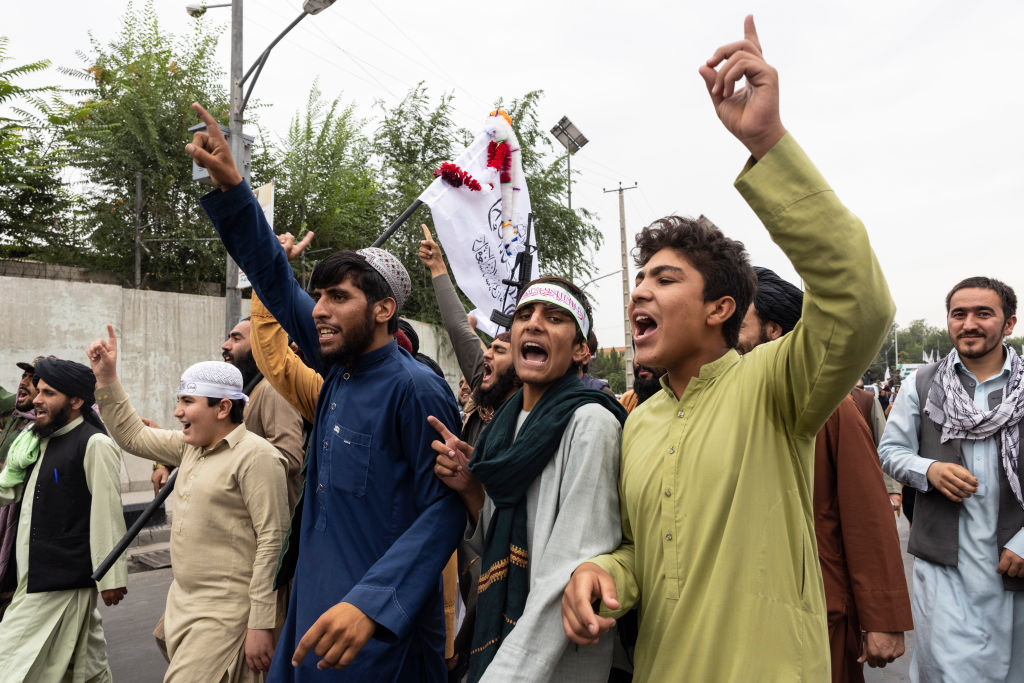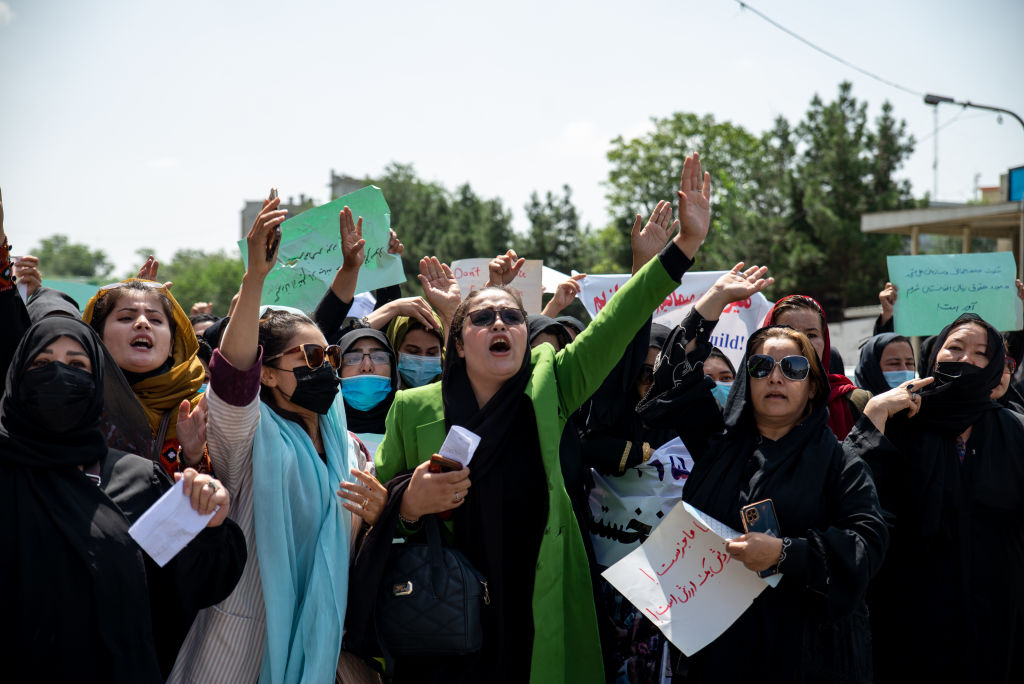
One year since the Aug. 31, 2021 U.S. withdrawal from Afghanistan, the country has spiraled as many had feared. The U.S. absence has brought a sense of relief to many Afghans who lamented the violence caused by a two-decade long war but there is now a deep humanitarian crisis. Nearly 20 million people—about half the country—are facing acute hunger amid a significant fall in per-capita incomes and foreign currencies.
Read More: One Year After the Fall of Kabul, Afghan Women Are Attempting to Build New Lives Abroad
Meanwhile, the Taliban has pursued an increasingly hardline approach. An Aug. 15 Amnesty International report documented an exceedingly repressive regime that has taken a brutal approach toward women, carried out targeted attacks on Afghan minority groups, engaged in extrajudicial killings against opponents, cracked down on peaceful protests, and stifled the press.
Here’s what to know about the state of Afghanistan today.
A dire economic crisis
Prior to the Taliban takeover in August 2021, the U.S.-backed government depended on the international community for around 80% of its national budget. “It wasn’t a strong safety net but it was a safety net nonetheless. It being taken away essentially precipitated this terrible crisis and made it very difficult for many Afghans to make ends meet,” says Michael Kugelman, the deputy director of the Asia Program at the Wilson Center and an expert on Afghanistan.
A World Bank report in April noted that per capita incomes likely fell by about one-third over the last months of 2021 as a result of steep declines in international aid and the U.S. decision to freeze nearly $9.5 billion in Afghan central bank assets. These decisions were attempts to prevent the Taliban from accessing money but came with a staggering human cost for the country.
More recently, U.S. President Joe Biden’s executive order in February to earmark about $3.5 billion in those frozen assets from the Afghan central bank for a pot to cover payments from lawsuits by American victims of 9/11 has been heavily criticized by many Afghans. (They later celebrated a U.S. federal judge’s Aug. 26 recommendation that 9/11 victims should not be allowed to seize assets from Afghanistan’s central bank.) U.S.-based Afghans For A Better Tomorrow had called Biden’s decision “short-sighted, cruel” and warned it would “worsen a catastrophe in progress, affecting millions of Afghans, many of whom are on the verge of starvation.” The Biden Administration initially said that an equal amount would go to humanitarian aid in Afghanistan, but has since ruled out releasing that money in the near future—citing concerns that Al Qaeda’s leader Ayman al-Zawahri had been taking refuge in Kabul.
Because Afghanistan imports more than it exports, the country depends on U.S. dollars and hard currencies to pay for those goods. “The financial sector is hobbled—meaning that ordinary people and businesses are paying high costs to make transactions informally, and those fees get passed along to the most vulnerable consumers in the world,” says Ibraheem Bahiss, an analyst focusing on Afghanistan at the International Crisis Group, in an email to TIME.
Read More: ‘War Is Betrayal.’ Coming to Terms With America’s Disastrous Departure from Afghanistan
A lack of money coming into the country means that there is not enough cash in the banks to pay salaries and cover other basic purchases, such as food and fuel, Kugelman says.
The Taliban’s stifling restrictions on women and minorities are also not only alienating the international community, but directly hurting the local economy. According to Sima Bahous, the executive director of U.N. Women, the decision to effectively bar women from the workforce has cost Afghanistan up to $1 billion in annual GDP.

The effect on women and minorities
Despite the Taliban’s prior assurances to the international community that they would not roll back the rights of women and minorities—as they did when they last ruled Afghanistan between 1996 and 2001—that has not been the case.
Since returning to power last year, the Taliban has issued a series of decrees restricting almost every aspect of women’s lives. In addition to heavy restrictions on working, women are no longer allowed to travel long distances outside of the home without a male companion unless absolutely necessary—and are required to wear burqas when outside. Though the Taliban pledged that they would reopen schools for female students, they reversed the decision for secondary schools.
The Taliban’s strict rules have left women-led households particularly vulnerable as many struggle to access humanitarian aid. “Depending on where this aid is being distributed in your province, especially if you’re living far away from the city center, getting access to that can be a problem,” says Mariam Safi, founding director of the Kabul-based Organization for Policy Research and Development Studies (DROPS). “If you don’t have a male relative then you don’t have access.”
DROPS has surveyed Afghan women in recent months about how safe they feel in the country. “While in some provinces, physical security may have improved, women’s sense of security has worsened quite a lot,” she says. Many women reported feeling caged and imprisoned. “One of our respondents said that it feels like a crime to be a woman,” she says.
“What’s happening right now is gender apartheid,” says Yalda Royan, a founding member of the Afghan Women’s Advocacy Group and a feminist activist who fled Kabul during the Taliban takeover. Women are now more prone to forced marriages—either because their families can’t afford to look after them or because a Taliban militant likes a woman and asks the family to give their daughter away, she says.
The Taliban has also cracked down on the minority Hazara community, which makes up about 20% of Afghanistan’s population. They have been removed from government positions and been the victim of targeted attacks. Amnesty International’s Aug. 15 report documented cases of Afghan minorities being forcibly evicted from their homes and unlawful killings.

What the international community should do
A first step, many say, is negotiating a way for the billions in frozen assets to reach Afghans. On Aug. 22, reports said the U.S. has decided to kickstart talks regarding the assets amid growing alarm about the humanitarian crisis in Afghanistan. Among the considerations are a Swiss-based trust fund that could bypass the Taliban and get funds directly into Afghan pockets. “Humanitarian aid is not going to solve a liquidity crisis,” says Kugelman of the Wilson Center.
But humanitarian aid is still essential, and there are different perspectives on what it should look like. Bahiss at the International Crisis Group says that it is unsustainable for Afghanistan to rely entirely on it given that it will eventually dry up—meaning Western donors and regional actors need to sit down with the Taliban to make a development plan. “That kind of high-level engagement is still impeded by Western squeamishness about talking to the Taliban,” he says. “We should admit that the Taliban control the country and behave accordingly, for the sake of the Afghan people.”
Naheed A. Farid, a former member of Afghanistan’s parliament and now a fellow at Princeton University’s Afghanistan policy lab, says that the “solution is perhaps that there has to be conditionality.” She is referring to the need to tie some aid to certain reforms to moderate the Taliban’s governance. But Farid also says the international community should find better ways to channel money toward non-profits and women’s groups.
For her and many female Afghan activists, the ultimate goal is the creation of an inclusive government through local and national elections, the repeal of discriminatory laws against women, the provision of universal education for all Afghans, and the right to work without discrimination. “I still have hope that we will take our hijacked freedom back from the Taliban,” Farid says.
More Must-Reads from TIME
- Cybersecurity Experts Are Sounding the Alarm on DOGE
- Meet the 2025 Women of the Year
- The Harsh Truth About Disability Inclusion
- Why Do More Young Adults Have Cancer?
- Colman Domingo Leads With Radical Love
- How to Get Better at Doing Things Alone
- Michelle Zauner Stares Down the Darkness
Write to Sanya Mansoor at sanya.mansoor@time.com